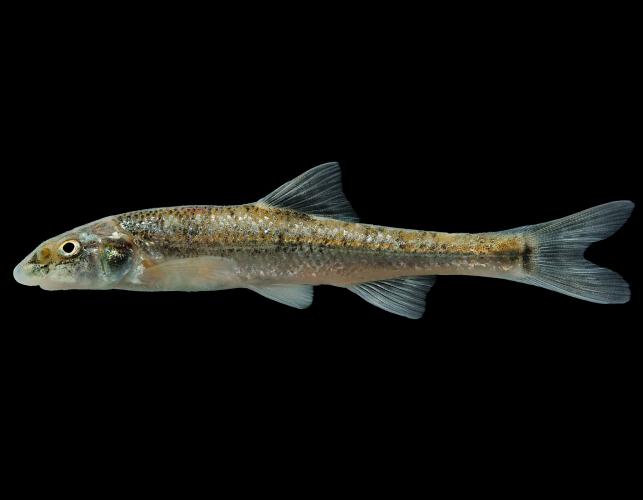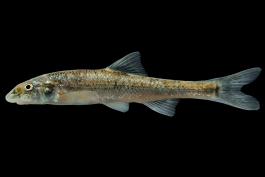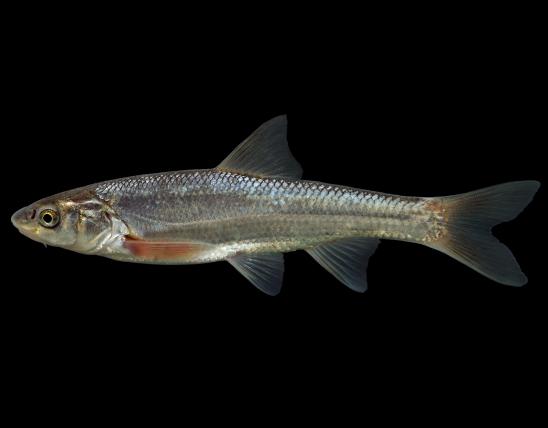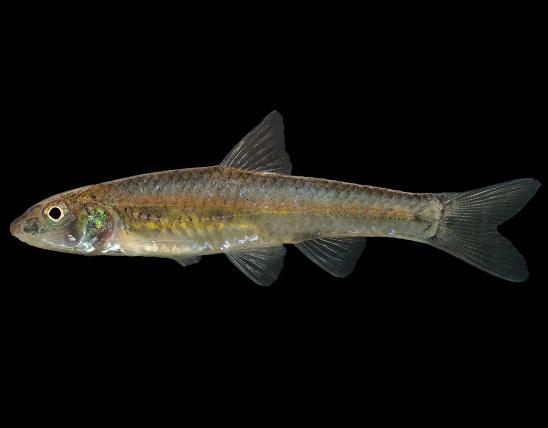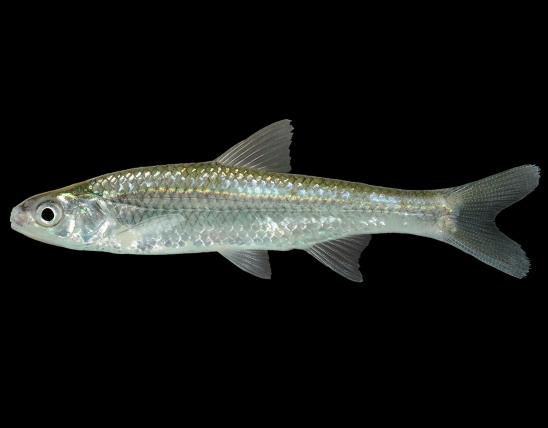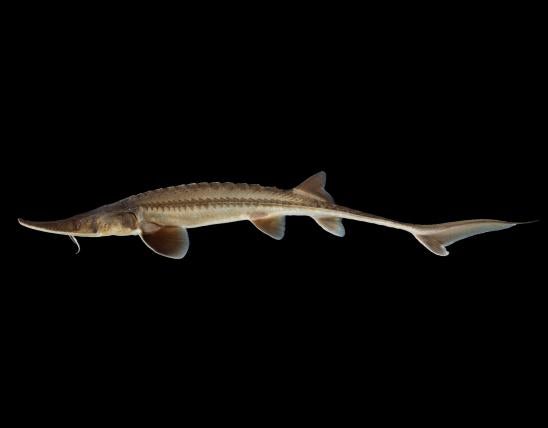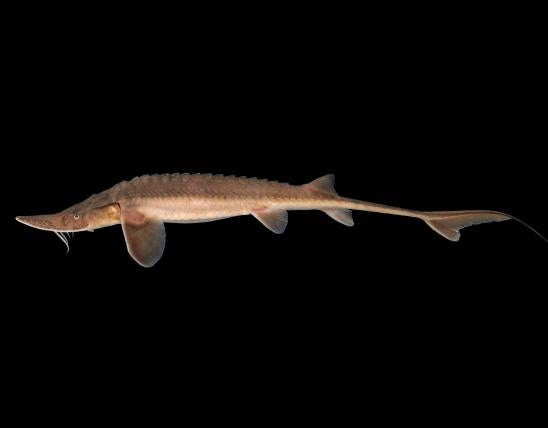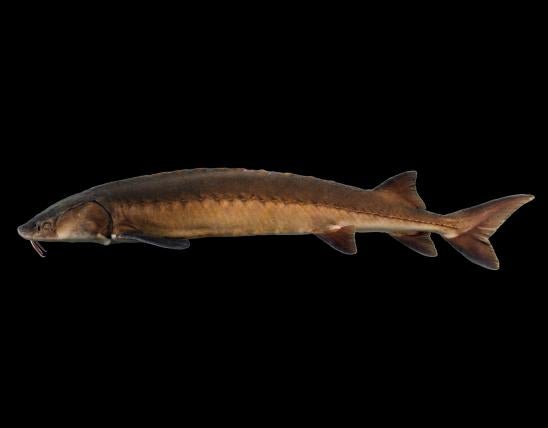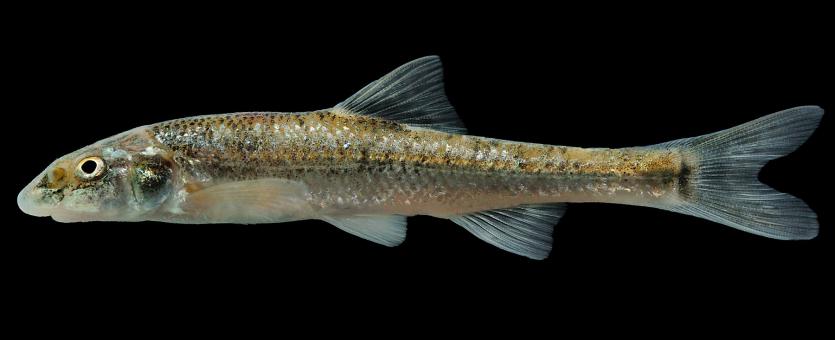
The sturgeon chub is a slender minnow with small eyes, a long, fleshy snout, and a small, horizontal mouth. Many of the scales on the back and sides have a low ridge or keel — a unique characteristic for this minnow. The mouth has a small, conical barbel at each corner. The snout is long and flattened, projecting far beyond the upper lip. The eye diameter is much less than the length of the snout (the distance from the front edge of the eye to the tip of snout). The front of the dorsal fin is closer to the tip of the snout than to the base of the tail fin.
This fish is light brown on the back, thickly dusted with fine dark specks; the sides are silvery without definite markings. The belly is silvery white. The lower lobe of the tail fin is darker than the upper lobe. Males in breeding condition have small tubercles along the rays of the pectoral fins.
Habitat and Conservation
The sturgeon chub is confined to the open channels of large rivers, where it lives in a strong current over a bottom of sand and fine gravel. The construction of several large reservoirs upstream from Missouri have eliminated much of this fish’s habitat, since these dams and lakes function as huge sediment traps, arresting the river’s current and causing silt to fall to the bottom behind the dam. Downstream of the dams, however, the river bottom has become less muddy, and the amount of gravel bottom has increased, thus sturgeon chub mainly occur in Missouri’s section of the river.
This small, little-known minnow is beautifully adapted for life in muddy, murky water, where vision is of little value and the sense of smell is the best way of locating food, with its small eyes and plentiful external taste buds on the head, body, and fins. It navigates well in swift waters thanks to its streamlined body shape, deeply forked tail, and keeled scales.
Food
Status
Life Cycle
Human Connections
Ecosystem Connections
The open river channels where sturgeon chub live are sparsely populated by other small fish, except for speckled chub, sicklefin chub, and flathead chub. These river chubs are important food for sturgeon species, including the federally endangered pallid sturgeon that lives in our rivers.
This species’ common name comes from the resemblance of its head to that of a sturgeon. Both the sturgeon chub and sturgeon face similar environmental challenges, and both have rather similar foraging strategies, so even though they are very unrelated, it is little surprise they should look similar.
